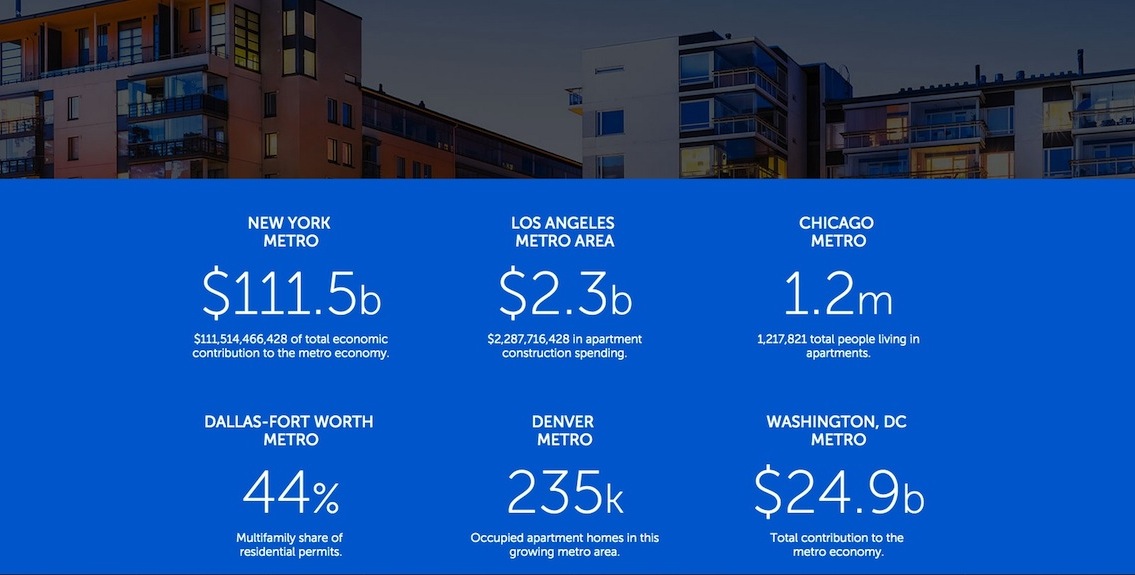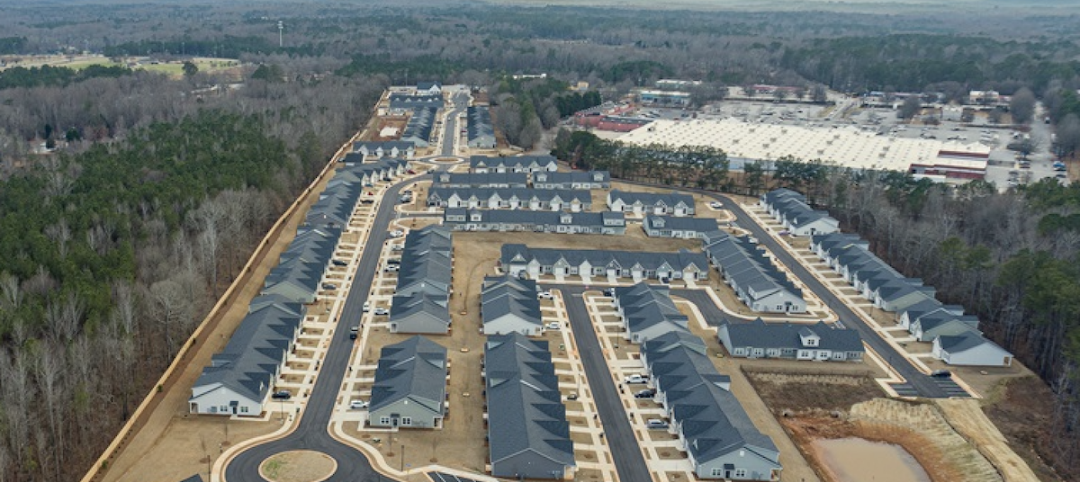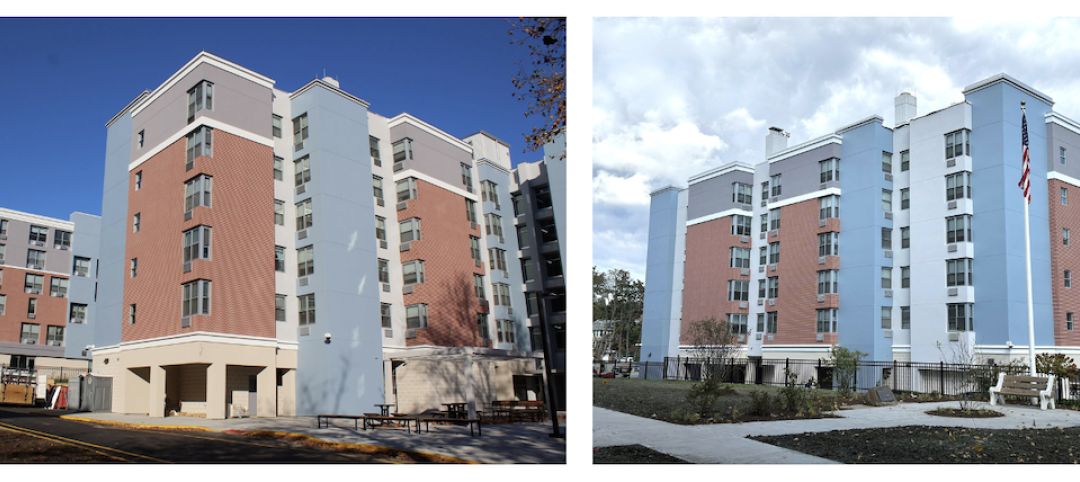The National Multifamily Housing Council and the National Apartment Association launched the latest phase of “WeAreApartments,” a marketing campaign that promotes the importance of the apartment industry to the U.S. economy.
Using research from George Mason University’s Center for Regional Analysis, the groups claim that there are more than 37 million Americans—12% of the population—living in just under 20 million apartment units nationwide. Apartments and their residents contribute $1.3 trillion annually to the economy through construction, property management, and other jobs the industry supports.
This research provides some interesting factoids about the apartment sector: For example, 49% are one-person households, compared to 24% of apartments with three or more people in them. The highest portion of apartment buildings—27%—has either 50 units or more, or a between five and nine units. The apartment housing stock is aging, too: more than half was built between 1959 and 1979.
The campaign contends that the country needs between 300,000 and 400,000 new apartments each year to keep up with demand.
Apartments contribute more to the New York metropolitan area’s economy—$111.5 billion annually—than in any other market. Multifamily accounted for 44% of residential permits issued in Dallas-Fort Worth last year. And $2.3 billion was spent on apartment construction in Los Angeles.
(The campaign’s website includes an Apartment Community Estimator, which allows metros and states to figure out the economic construction from the apartment sector in their respective areas.)
The campaign contends that the country needs between 300,000 and 400,000 new apartments each year to keep up with demand. “What construction has accelerated in response, many communities still lack sufficient housing options,” it reports.
To get its message out, the groups sponsoring this campaign have devised a new series of print and online ads that attempts to get beyond perceived stereotypes about apartment dwellers. For example, one ad shows a young African-American woman sitting in the kitchen of her apartment. The ad describes her as “Botanist. Swim Coach. Pickle Easter. Renter,” followed by the campaign’s tagline “Apartments. We Live Her.” Another ad states humorously that “Liberals Live In Them. So Do Conservatives, But In Another Wing.”
One of the campaign’s more provocative messages is that apartment dwellers are fulfilling their “The American Dream.” That phrase, heretofore, had been reserved for homeownership, but younger Americans’ avidity for owning a house is still uncertain.
Related Stories
Standards | Apr 1, 2024
New technical bulletin covers window opening control devices
A new technical bulletin clarifies the definition of a window opening control device (WOCD) to promote greater understanding of the role of WOCDs and provide an understanding of a WOCD’s function.
Adaptive Reuse | Mar 26, 2024
Adaptive Reuse Scorecard released to help developers assess project viability
Lamar Johnson Collaborative announced the debut of the firm’s Adaptive Reuse Scorecard, a proprietary methodology to quickly analyze the viability of converting buildings to other uses.
Green | Mar 25, 2024
Zero-carbon multifamily development designed for transactive energy
Living EmPower House, which is set to be the first zero-carbon, replicable, and equitable multifamily development designed for transactive energy, recently was awarded a $9 million Next EPIC Grant Construction Loan from the State of California.
Adaptive Reuse | Mar 21, 2024
Massachusetts launches program to spur office-to-residential conversions statewide
Massachusetts Gov. Maura Healey recently launched a program to help cities across the state identify underused office buildings that are best suited for residential conversions.
Multifamily Housing | Mar 19, 2024
Jim Chapman Construction Group completes its second college town BTR community
JCCG's 200-unit Cottages at Lexington, in Athens, Ga., is fully leased.
Multifamily Housing | Mar 19, 2024
Two senior housing properties renovated with 608 replacement windows
Renovation of the two properties, with 200 apartments for seniors, was financed through a special public/private arrangement.
MFPRO+ New Projects | Mar 18, 2024
Luxury apartments in New York restore and renovate a century-old residential building
COOKFOX Architects has completed a luxury apartment building at 378 West End Avenue in New York City. The project restored and renovated the original residence built in 1915, while extending a new structure east on West 78th Street.
Multifamily Housing | Mar 18, 2024
YWCA building in Boston’s Back Bay converted into 210 affordable rental apartments
Renovation of YWCA at 140 Clarendon Street will serve 111 previously unhoused families and individuals.
Adaptive Reuse | Mar 15, 2024
San Francisco voters approve tax break for office-to-residential conversions
San Francisco voters recently approved a ballot measure to offer tax breaks to developers who convert commercial buildings to residential use. The tax break applies to conversions of up to 5 million sf of commercial space through 2030.

















